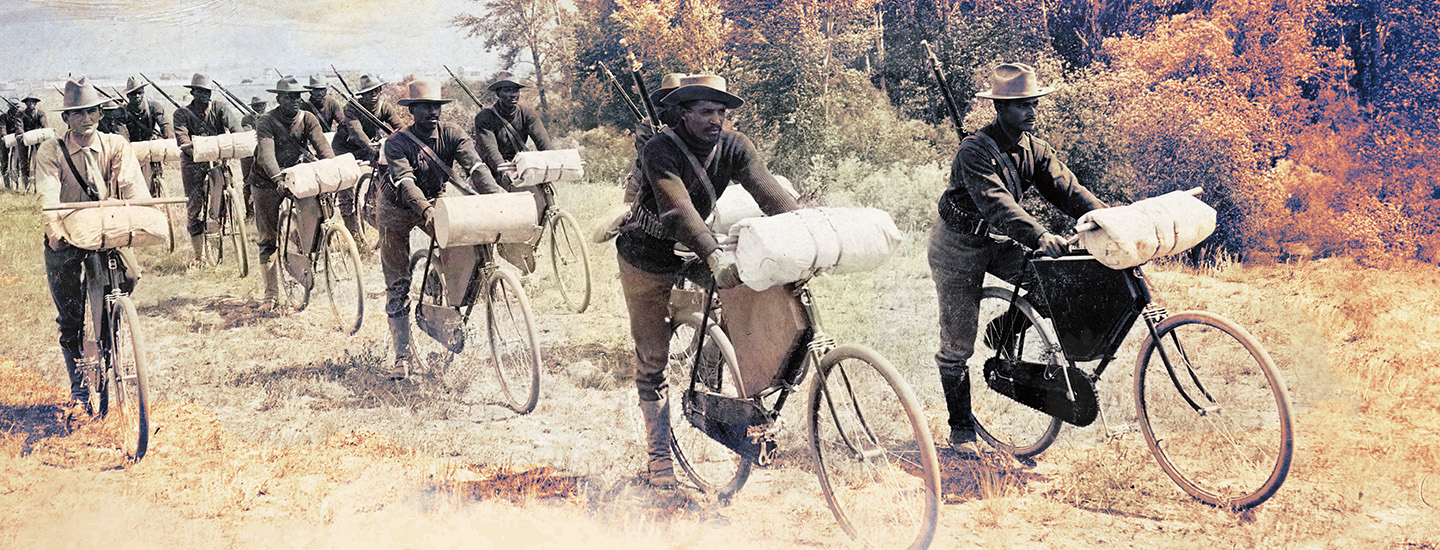On June 14, 1897, members of the 25th Infantry Bicycle Corps began an epic journey. Two officers and 20 soldiers from the all-Black Army regiment hopped on bicycles loaded with gear and set off on a trip from Fort Missoula, Montana, to St. Louis, Missouri.
At the time, cars were brand-new inventions, so soldiers usually rode horses. But bicycles had been gaining popularity around the world. The vehicles were inexpensive and easy to maintain. An army officer named James A. Moss wanted to prove that bicycles were just as good as—or better than—horses to transport soldiers.
Moss asked for volunteers from one of four racially segregated Black Army units created after the Civil War. Men from these regiments were called Buffalo Soldiers. This nickname was given to them by the Native Americans they were fighting against on the western frontier.
The group left Fort Missoula at 5:30 a.m. that day in June. They rode double-file through Missoula as people cheered them on. A reporter traveling with them wrote that the ride was “one of the most important journeys ever taken out of Missoula.”
In June 1897, the 25th Infantry Bicycle Corps began an epic journey. More than 20 officers and soldiers from the all-Black U.S. Army regiment loaded their bicycles with gear. They hopped on their bikes and began a trip from Montana to Missouri.
At the time, cars were brand-new inventions. Soldiers usually rode horses. But bicycles had been gaining popularity around the world. The vehicles were inexpensive and easy to maintain. An army officer named James A. Moss wanted to prove that bicycles could transport soldiers as well as horses.
Moss asked for volunteers from one of four racially segregated Black Army units created after the Civil War. Men from these regiments were called Buffalo Soldiers. Native Americans gave them the nickname when they fought on the western frontier.
The group left Fort Missoula at 5:30 a.m. that day in June. As they rode two-by-two through Missoula, a crowd cheered them on. A reporter wrote that the ride was “one of the most important journeys ever taken out of Missoula.”

